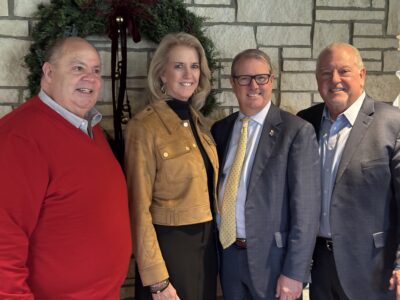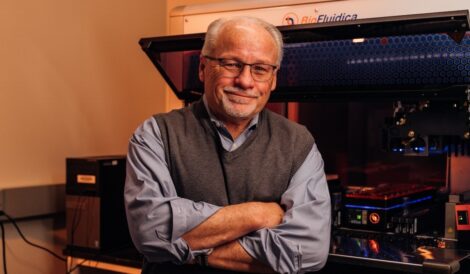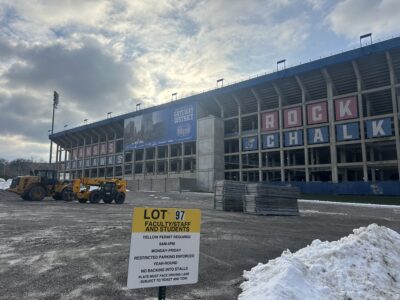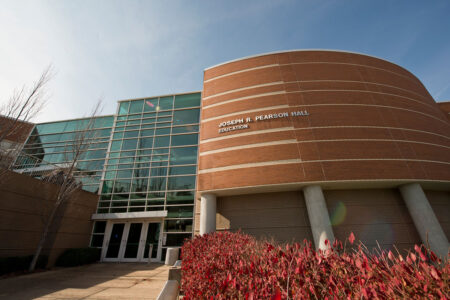Weather balloon carries KU research project to lofty heights

Paul Verhage, a Kansas University graduate student in the aeronautical engineering department, prepares radio tracking gear and science experiments prior to launching a weather balloon Sunday behind Learned Hall on the KU campus. Verhage and other aerospace engineering students tracked the balloon from Lawrence into Missouri, east of Kansas City.
Paul Verhage and his team of students and amateur radio operators spent their Halloween morning with eyes toward the sky. When not looking upward, their gaze was fixed on high-tech tracking equipment and GPS units.
Although the group’s mission was weather-related, it was a balloon they were chasing, not a tornado.
Verhage, a graduate student at Kansas University, and his team are part of the aerospace engineering department at KU. Sunday morning they launched a weather balloon that carried radio tracking gear, science experiments and cameras to an altitude of around 100,000 feet.
“It’s called a near space launch” Verhage said. “At that altitude the air pressure is 99 percent vacuum, the sky is black and the Earth is bright blue and noticeably curved.”
Verhage said the balloon reaches the peak altitude about 90 minutes after takeoff. The balloon expands as it ascends, at some point bursts, and the payload is then parachuted back to the ground in about an hour.
Group members hopped in their vehicles and began the chase immediately after the launch around 8 a.m. They eventually tracked the balloon to about 10 miles south of Interstate 70, about 30 miles into Missouri.
The balloon was found in a tree about 40 feet off the ground, and took about three hours to recover. Verhage said there was some damage, but nothing that can’t be repaired. He said the balloon reached a height of about 102,000 feet and at one point was traveling 100 mph.
Andy Alexander, a Spring Hill resident, and his family of amateur radio operators helped with the chase. They heard about the launch through Boy Scouts and decided to give it a shot.
“It’s fun and it allows us to have a chance to use our equipment and gives a purpose for the technology,” Alexander said.
Jacob Lynn, a senior in aerospace engineering, was one of the students who helped with the launch. Lynn said this is his third launch, but that each one is exciting.
“The best part is right at the end when the balloon is coming down,” Lynn said. “It’s cool to be involved and to hold something that you know has been higher than almost anything else on the planet.”
Verhage said the purpose of Sunday’s exercise was to get students familiar with the launches and to test the tracking equipment. The balloon will return information ranging from radiation counts in space to weather temperature and pressure, not to mention beautiful photographs.
Verhage said the “poor man’s space launch” allows students to design functioning models of satellites using mostly over-the-counter parts that will collect data in a space-like environment.
“They learn a lot and it’s exciting the whole time, from the construction to the launch to the chase,” he said.
Verhage plans to teach an aerospace engineering class next year that will include a number of launches. He said future flights will carry experiments for students from elementary to university levels.







